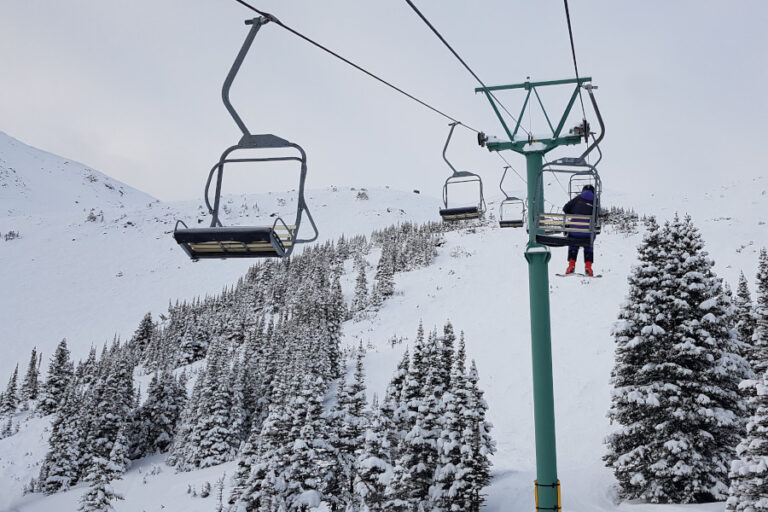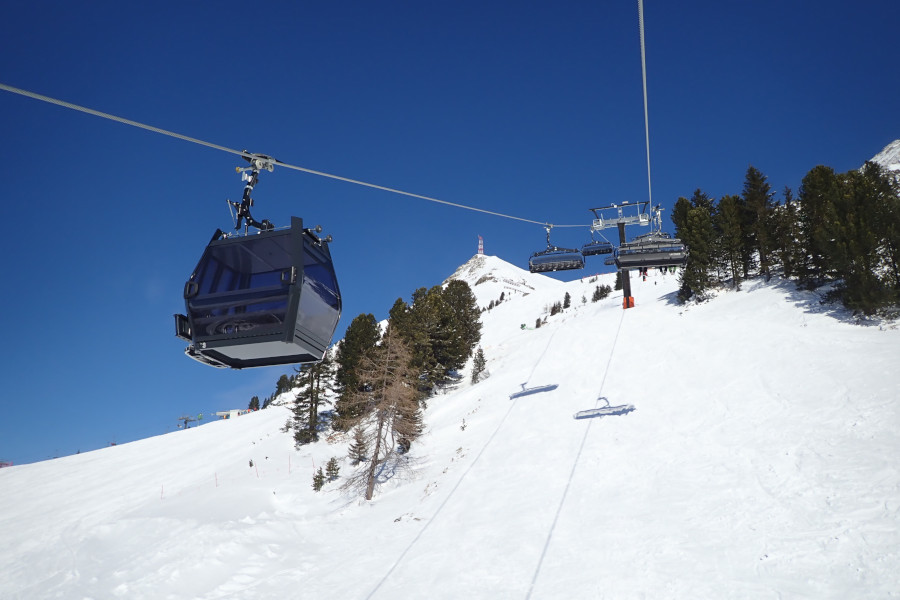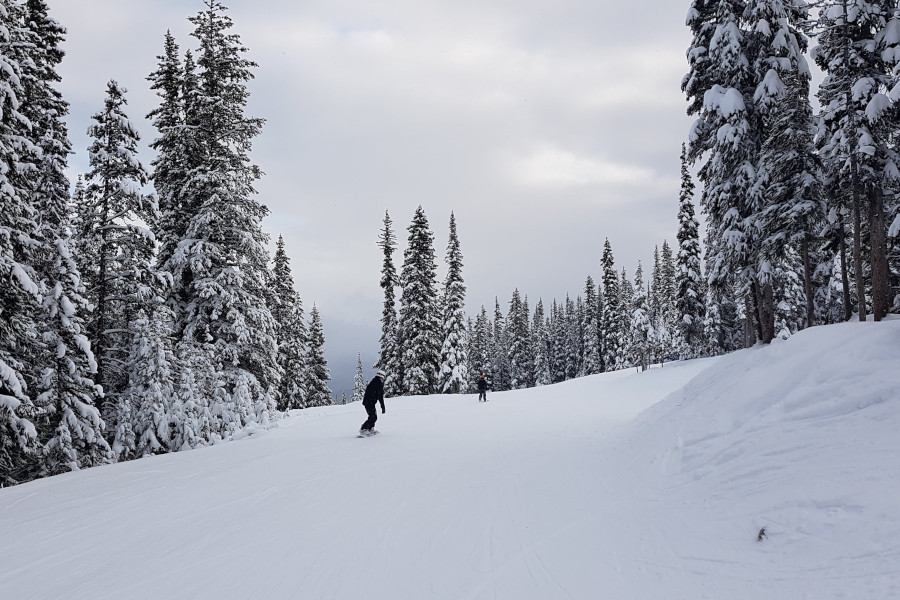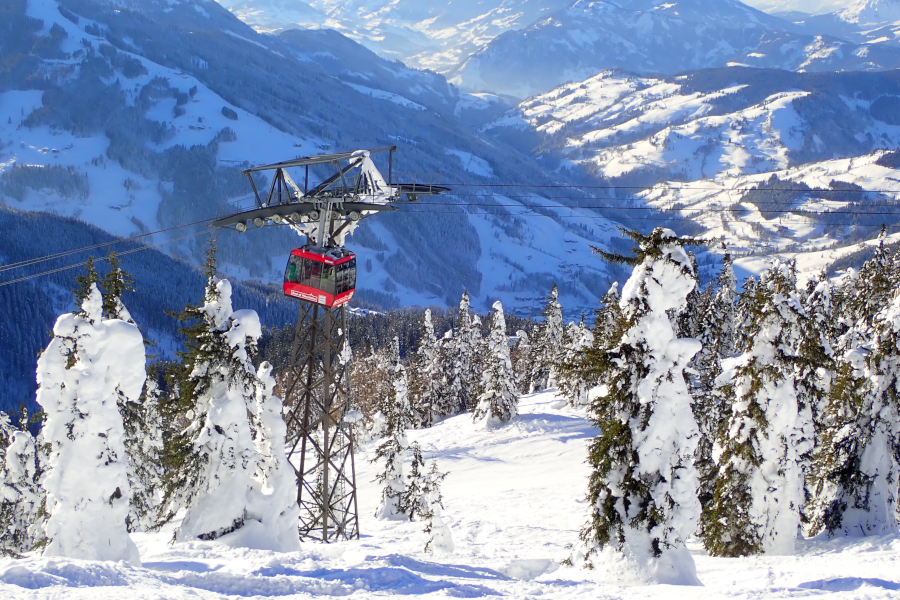There are plenty of options for a fun winter sports holiday, but the most popular destinations are found in Europe and North America — and for good reason. Both Europe and North America offer fantastic skiing experiences. But which one is actually the better destination for a ski or snowboard trip?
Lift Prices
When it comes to ski pass prices, Europe is clearly the winner. A day pass in most European resorts costs around €50 to €60. Even in Les Trois Vallées (France), the largest ski area in Europe, a day pass is €79.
In contrast, lift tickets in North America are significantly more expensive. In popular resorts like Whistler Blackcomb (Canada) or Jackson Hole (USA), you’ll pay more than $200 for a single day of skiing. The most expensive resort in North America is Deer Valley (USA), where a day pass costs a staggering $299.
Sure, there are cheaper resorts like Whitefish (USA), where a day ticket is “only” $85—but these resorts tend to offer a lot less in return.
Lift Infrastructure
There are also differences in lift infrastructure. In Europe, ski lifts tend to be very modern and luxurious. Some even come with heated seats. In Laax (Switzerland), there’s a lift that can take you to five different locations. Especially in Austria and Switzerland, you’ll find many state-of-the-art 8-seater chairlifts and 10-person gondolas that quickly whisk you up the mountain.
In North America, lifts tend to be older and slower. You won’t find heated seats or protective bubbles on chairlifts. Then again, let’s be honest: heated ski lift seats might be a bit of a luxury.


Crowds
When it comes to crowds, neither continent has a great reputation. In Europe, especially during peak season, the slopes can be packed. In Flachau (Austria), it’s not uncommon to wait 45 minutes for a lift during the holidays. And once you’re on the mountain, the slopes are often overcrowded, making skiing more difficult. Finding a place to sit for lunch can also be a challenge.
But it can be even worse. Let’s head back to North America. You may have seen viral videos of ridiculously long lift lines there—and they’re not exaggerated. Especially in major resorts like Whistler Blackcomb, Revelstoke (Canada), or Jackson Hole, the lines can be extreme.
However, it’s not all bad news. In Europe, many tourists flock to well-known areas like Flachau, Obertauern (Austria), or Les Trois Vallées, making them especially busy. But there are also lesser-known, quieter resorts such as Goderdzi (Georgia) or Levi (Finland), where you’ll rarely wait in line. The same goes for North America, where smaller resorts like Baldy (Canada) or Mt. Baker (USA) offer peaceful skiing experiences.
Snowfall
When it comes to snowfall, North America has the upper hand. While European resorts are lucky to receive 5 meters of snow in a season, North American resorts like Jackson Hole, Whitewater (Canada), and Snowbird (USA) average more than 11 meters per season.
Mt. Baker even receives a staggering 18 meters of snow annually! That said, it’s mainly coastal resorts that receive heavy snowfall. More inland resorts like Lake Louise or Marmot Basin (both in Canada) receive just 3 to 5 meters per year.
In Europe, most resorts average around 3 meters of snow per season. However, some areas get significantly more. Goderdzi in Georgia receives between 10 and 15 meters of snow per season. Scandinavian resorts also receive a decent amount of snow due to the cold climate.

Ski Resorts
Although North America is geographically larger than Europe, Europe has significantly more ski resorts. North America has just over 800 ski areas, whereas Europe boasts nearly 4,000. That means Europe has roughly five times as many ski resorts.
On average, European resorts are also larger. Whistler Blackcomb, the largest ski resort in North America, has around 30 ski lifts and 200 kilometers of slopes. Meanwhile, Les Trois Vallées in France has more than 150 lifts and over 600 kilometers of ski runs.
Europe also tends to be more advanced in producing artificial snow and maintaining perfectly groomed slopes.
That said, North America offers better off-piste opportunities. Most resorts have designated, ungroomed “trails” where you can enjoy North America’s legendary powder snow. These trails are strictly monitored for safety—if it’s not safe, access is restricted. This allows you to enjoy powder skiing without worrying about avalanches.
In Europe, you can technically ski wherever you want, which may sound exciting but can be quite dangerous.
North America also excels in offering heli-skiing and cat-skiing, making it a paradise for freeriders.

Accommodation
In both Europe and North America, you can easily find lodging close to the ski areas. In Europe, you can stay in charming French chalets, luxurious spa hotels, or cozy alpine huts. Europe also offers something truly unique: après-ski.
In North America, you’ll stay in cute mountain towns or vibrant ski villages. If you’re skiing in Jackson Hole, you can stay in the charming Teton Village or the Western-style town of Jackson.
As far as prices go, Europe tends to be more affordable.
Conclusion
So, which is better: skiing in Europe or North America? That depends entirely on what kind of skier or snowboarder you are.
If you love deep powder and are willing to spend a bit more, then North America is your ideal destination.
But if you value modern lift systems, perfectly groomed slopes, massive ski areas, or just want a more budget-friendly trip, Europe is the place for you.


